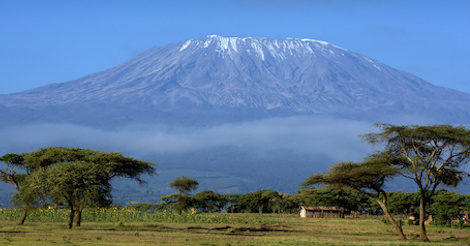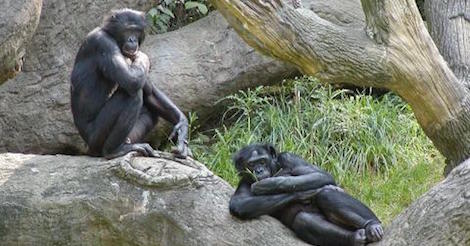Being Human
This Being Human blog post was written by Michael Taft.

When was the last time you were stalked and attacked by a hungry mountain lion—or any other large predator for that matter? No matter where you live in the world or your level of income, it is extremely unlikely that you have ever endured the terrifying experience of almost being torn apart and devoured. Yet every year Hollywood produces dozens of films that depict exactly that scenario. Though sometimes protagonists are menaced by a real-life predator (think Jaws or the Piranha films), we especially like to watch people as they are stalked by imaginary monsters. Whether it’s the vampires and werewolves of True Blood, the zombies of The Walking Dead, or any of the myriad other creatures of screen and storybook, we love the fantasy of the man-eating monster. But why do we love something so seemingly unpleasant—so much, in fact, that we will spend precious time and money on books, films, and games to experience it? The answer may lie in our distant past.
We may now be masters of land, sea, air, and space, but until quite recently, human beings were regularly prey for other beasts. People wandering from the group weren’t safe in the woods or out in the open, as our prehuman ancestors made fine game for big cats, wolves, bears, large snakes, and even huge prehistoric eagles. Although we have been hunters for quite a long time (maybe as far back as 2 million years), it has only been recently that a human being alone in the wild was not at risk of becoming dinner for some big, scary animal with long teeth or talons and a flat, glassy look in its eye.
This long history of very real danger has left its indelible mark in the evolution of our brains. Human babies are born with a fear of heights, for example, because our ape ancestors lived in trees for millions of years. Children born on the flattest of ground today still retain this primal fear; a strong warning sign for a danger that is no longer present very often. In the same way, the biologically useful fear of large, man-eating animals is still with us, wired into the deep structure of our brains, even if the predators themselves are long gone. Our evolutionary past shaped our brains to fear the things that were most dangerous in our ancient environment, not the present one. Small children will waltz in front of trucks on the highway without a second thought, but woe to the parent who accidentally lets their six year old watch too much of Shark Week before a beach vacation.
So there are sound, biological reasons to fear getting gobbled up by the big, bad monster under the bed. But why on earth would we actively seek out and enjoy this feeling of terror? Psychological explanations abound. Freud wrote in 1919 that the thrill we get from horror wasn’t real fear, but the disguised thrill of illicit sexual thoughts.* (Why does Freud always sound like a parody of Freud?) Modern theories about the nature of fear tend to be less psychosexual, and more about evolutionary fitness. For example, we all know that children love to play games where one person in hiding jumps out and scares the other—typical ambush predator behavior. Mammalian researchers Spinka, Newberry, and Bekoff write that such play is “training for the unexpected,” which means that the joy of playing ambush games has (or had) adaptive value in training children to flee predators.** And as adults we continue to enjoy this play from time to time, even if it is in the form of movies or television shows.
As for the monsters themselves, human beings are nothing if not creative. Over time, we have not only told stories about real predators, but have invented predators much more frightening than the ones that nature provides. The vampires, werewolves, zombies, dragons, and other supernatural monsters glean their most outrageous features from another aspect of the human brain: its sheer inventiveness. The human mind, creator of the xenomorph with acid blood and pharyngeal jaws; the lycanthrope who takes the primal terror of the wolf pack and gives it a human face; the dead who do not die but come back to seduce, then consume, the living; the giant monsters who rise from the sea to ravage our cities; all the creatures that haunt our myths and our dreams. The human mind has taken the fear born into us from our humble past and manifested it into something larger than life.
And so, the next time you find yourself shuddering in mixed disgust and delight as the slavering jaws of the creature close on another poor victim, remember that this cocktail of fear and joy is just evolution’s way of reminding you to avoid the big, bad, very earthly monsters of another era long ago.
* Freud, S. (1955/1919) ‘The “Uncanny”’, in J. Strachey (Ed. and Trans.), The Standard Edition of the Complete Psychological Works of Sigmund Freud (Vol. 17, pp. 219-256).
** Špinka, M., Newberry, R. C. & Bekoff, M. (2001). Mammalian Play: Training for the Unexpected. The Quarterly Review of Biology, vol. 76, no. 2, 141-168.


